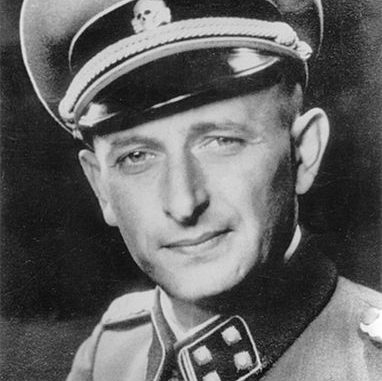
By: Jonathan Feldstein
This week marks 60 years since the daring Mossad operation to arrest and ultimately bring to trial notorious Nazi leader, architect of the Holocaust, and mass murderer, Adolf Eichmann. Eichmann was captured in Argentina on May 11, 1960, brought to Israel where he was tried.
The plan to find, arrest, and bring Eichmann to trial was known as Operation Finale. Just 15 years after Eichmann went into hiding following the Holocaust, and 12 years from the restoration of Jewish sovereignty in Israel, Israel’s Mossad was able to implement a bold and ambitious plan that remains one of the most famed Mossad operations. It was so important that the head of the Mossad, Isser Harel, personally traveled to Argentina to oversee it. Many books have been written as a result but probably the best well known is Harel’s “The House on Garibaldi Street.”
After WWII, Eichmann was captured, but escaped. He assumed false identities as he transversed Europe on the run. In 1950, he moved to Argentina using false papers obtained by a Catholic bishop Nazi sympathizer. A decade later, following months of surveillance and reviewing intelligence, his identity and location were confirmed. He was in Argentina living under the alias Ricardo Klement.
Harel’s book depicts the process to track and arrest Eichmann, as well as the stresses and challenges involved. Most of the Mossad team involved with capturing Eichmann were Holocaust survivors themselves, many losing numerous relatives in the Nazi inferno. They understood the historic opportunity and imperative to act responsibly, treating Eichmann well while in captivity, and ensuring a fair trial. Some struggled with and balanced their professional responsibility with their personal loss, and even the desire to kill Eichmann in cold blood as their relatives had been killed.
After being captured, Eichmann not only affirmed his identity but the crimes for he would be tried, rationalizing that he was just a cog in the machine, simply following orders. He was not shy or embarrassed by his role, and wrote statement agreeing to be tried in Israel. Nevertheless, while Eichmann cooperated, the Mossad team left nothing to chance. Eichmann was held in a secret safe house for over a week, before getting him out of Argentina to Israel. He stood trial on 15 charges, including war crimes, crimes against humanity, and crimes against the Jewish people.
Eichmann’s trial was among the first to be televised. Millions were gripped with emotional first-person testimonies of the reality of the Holocaust. It was widely followed in the media and was the subject of several books and movies. He was found guilty, and was executed by hanging on June 1, 1962. Eichmann remains the only person ever to receive the death penalty in Israel.
Eichmann’s capture and trial was cathartic for the Israel and the Jewish people. Eichmann stood trial before the people he tried to exterminate. It marked the first time that Jews were able to try one of their executioners, not just after the Holocaust but in over 2000 years. Israel and the world were in awe from the audacious operation.
Throughout Israel, memories that had been repressed exploded. In court, witnesses screamed, cried, some wanting to attack Eichmann who sat in a bulletproof box. The complete story of Eichmann’s directing the “final solution” came out into the open.
After the Nuremburg trials, this was the first time globally that Holocaust survivors were given an opportunity to share the horrors that they had suffered. The world listened and bore witness, understanding the suffering and loss individually, and the horror that six million Jews had been murdered.
Harel’s book remains the authoritative account of Operation Finale. Following a lead from the prosecutor of the German province of Hesse, the Mossad was put in charge of devising and implementing the plans. Failure was not an option. There were many leads and circumstantial evidence, but they didn’t have conclusive proof until March 21, 1960 when they observed “Ricardo Klement” returning home with a bouquet of flowers which he gave to the woman who greeted him at the door. From outside, they heard people inside a celebratory mood. March 21 was the Eichmann’s 25th wedding anniversary.
Setting the stage for Eichmann’s capture, that May, Argentina was celebrating its 150th anniversary of independence. Harel made sure that Israel’s delegation for the national celebration included veteran Mossad operatives, handpicked due to experience with years of undercover intelligence work. Leading up to the festivities, the agents began to arrive in Buenos Aires and go into action.
After months of planning, May 11 was picked as the day to capture Eichmann. Not far from his house, one of the Mossad operatives surprised, and then pounced on him. Eichmann “let out a terrible yell, like a wild beast caught in a trap.” Panic-stricken, Eichmann was pulled into a waiting car, the whole operation planned for months lasted less than ten minutes.
Eichmann was brought to a safe house, blindfolded, and shackled to his bed. He was checked and guarded 24/7 to be sure he could not try to kill himself as other Nazis had done after being captured.
The complete account of the details of Eichmann’s being followed, captured, interrogated, and brought to Israel are well worth the read. This was pivotal and marked the huge difference in the state of the Jewish people. Unlike twenty years earlier when Eichmann orchestrated his crimes, the Jewish people had a state, an army, and a world class intelligence service to ensure what Eichmann did could never happen again.
Now, three generations since the arrest and trial of one of the history’s most evil anti-Semitic criminals, the threat of anti-Semitism still exists. Few survivors remain to testify to the horrors that Eichmann and other Nazis put them through. In a generation there will be no more. It’s never been more important to remember the evils that were perpetrated so as to prevent the persecution of the Jewish people ever again.
Photos:
Nazi official Adolf Eichmann
Adam Guz/Getty Images

